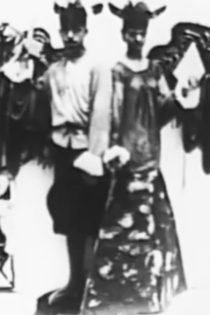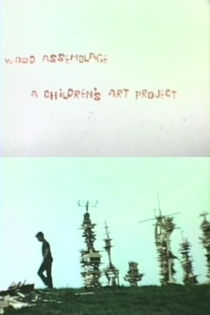
Richard Myers
2021Moving Pictures
Richard Myers
MOVING PICTURES began with a dream I had about a woman walking beside a woods and singing a beautiful aria. I didn’t remember the song, but for the film I selected Plaisir d’Amour by Jean Paul Égide Martini. The film soon became a series of other dream ideas as well. I wanted every scene in the film to be a tracking shot, moving from right to left like a dream scroll. I wanted the film to be quiet and contemplative, and I didn’t want to use subtitles.
Moving Pictures

Zocalo
Richard Myers
ZOCALO is a color, optically-printed experiment that uses as its base the Zocalo Square in Mexico City. Unlike my other films … it began as a class experiment … and because of my feelings towards the square itself … pursued it in all its variations … finished in December 1972.
Zocalo
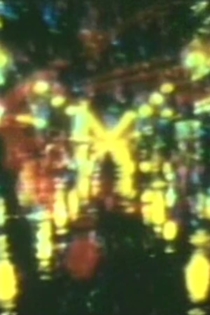
Floorshow
Richard Myers
In Floorshow he presents a rich stream-of-consciousness flow of images that encompass past, present, and fantasy, a contemplation of the filmmaking process, and film aesthetics. Myers makes a bolder-than-ever attempt to break down the barriers between the conscious and subconscious, the making of a film and the film itself. What Myers projects is an acutely personal vision of life so beautifully shaped and paced that we're able to connect with it even if we cannot expect to decipher its private meanings.
Floorshow

First Time Here
Richard Myers
"In FIRST TIME HERE, I attempted to freely associate two or three dreams with the story of the four women who had an atomic bomb display at a carnival. I wanted the film to be a fantasy which represented various life cycles and, in a sense, to be a celebration of the absurd mess man has gotten himself into."
First Time Here
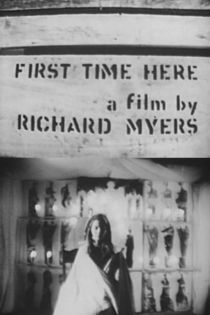
Akran
Richard Myers
Robert Ohlrich, Pat Myers
"A feature-length deluge of incessant, brilliant bursts of images (short takes and jump cuts, single frames in series, freeze-frames slightly altered between takes) it creates a Joyce-like dense and sombre mosaic of memory and sensory impressions, a texture instead of a plot, a dream-like flow of visually-induced associations often flashing by faster than they can be absorbed. Described by the director as an 'anxious allegory and chilling album of nostalgia,' its penetrating monomania is unexpectedly — subversively — realized to be a statement about American today: the alienation and atomization o technological consumer society is reflected in the very style of the film." - Amos Vogel, Film as a Subversive Art
Akran
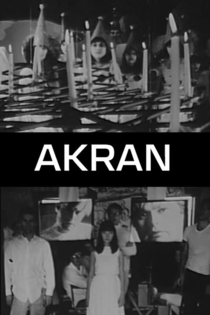
The Path
Richard Myers
"My first film, THE PATH, was based on a dream about a group of people on an ‘outing’ or a picnic. The people in the dream meet and greet one another and then walk around and through old houses, barns, and buildings. Inside these structures they pass by other people involved in various activities. A woman is folding clothes. A man is making paintings. A young girl is sitting in front of a mirror trying on different necklaces." - Richard Myers
The Path
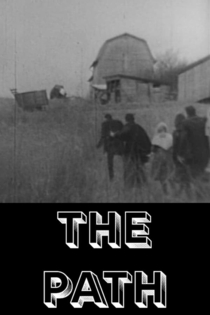
Akbar
Richard Myers
“A conversation with a friend – Ahmed Akbar. A short interview-type film portrait with Akbar, a black filmmaker and former student of mine at Kent State. Akbar expresses an unusual and exciting view of himself/blacks in America/and such varied subjects as ‘this moon race shit!’ A friendly, lively, exciting portrait of a very extraordinary person from Akron, Ohio.” –Richard Myers
Akbar

Tarp
Richard Myers
Most of my longer films have been based on dreams and have been of a personal semi-autobiographical nature. Tarp represents my interest in more simple/basic visual themes: Color, shape, and “found object” filmmaking. I began “recording” all of the tarps in my immediate neighborhood and surrounding cities – tarps over cars and boats and campers, tarps as tents, on trucks and hanging from overpasses on freeways. The fragmented result still maintains a dream-like tone, yet speaks about the mysterious way we Americans cover-up and protect things and the strange locations in which we do it.
Tarp

Allison
Richard Myers
The film is a portrait of Allison Krause, one of the students murdered at Kent State University on May 4, 1970 by the Ohio National Guard. It is a memorial put together from footage that Richard Myers and his students filmed of Allison (unknowingly at the time) during student war demonstrations. The film’s images are very simple but the soundtrack read by Arthur Krause, Allison’s father, is deeply moving.
Allison




